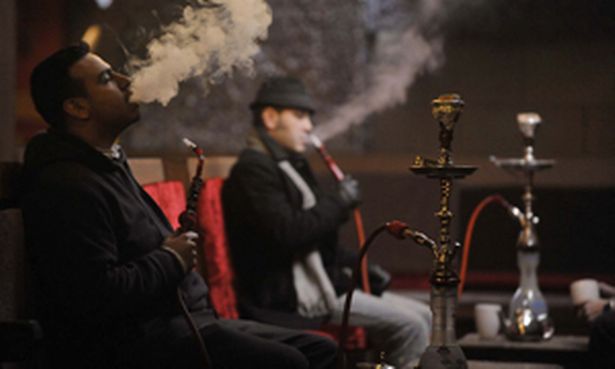It’s time to defog the facts about shisha.
With the ever rising popularity of shisha amongst the Asian youth, it seems one can’t turn a corner without running into a new Hookah haunt. With swanky shisha bars and lounges becoming ever-present on our streets, it’s no wonder more and more of the new generation are hooking on to the habit.
The molasses-based tobacco concoction has become all-the-rage, reviving what was once considered an old tradition of Arab decent. The multi-stemmed instrument is used to vaporize and smoke flavoured tobacco called shisha, which is sweetened with all kinds of enticing flavours including Bubble-gum, Pineapple and Blueberry –Vanilla. With so much variety in fun and flavour, it’s no wonder Shisha bars are seeing a growth in demand.
…But you know what they say, there’s no smoke without fire. It seems the Hookah lounge isn’t quite as harmless as you might think. In the first-ever study of its kind, researchers at the University of Birmingham looked into what’s really lurking in air of the shisha bars across the city.
An investigation into the air quality inside 12 shisha bars across the city, lead researchers to find dangerous levels of carbon monoxide present in the air of bars in Birmingham. Often linked to asthma, lung cancer and low birth rate, excessive amounts of the gas can lead to oxygen depletion in haemoglobin in the blood, causing dizziness, shortness of breath, confusion and even loss of consciousness and death. Longer term exposure to carbon monoxide can cause chronic bronchitis as well as increased mortality from lung cancer and heart disease.
According to results, it not only affects those within the shisha premises. Air pollution is also spilling out onto the streets, meaning passers-by are also inhaling high levels of carbon monoxide and known carcinogen, tobacco though smoke.
Air inside shisha bars is said to be even more polluted then the levels recorded in bars and pubs before the smoking ban, introduced in 2007.
Jacqui Kennedy, acting strategic director of place for the city council, said: “This study shows a worrying lack of awareness of the risks from premises and staff, as well as those who visit shisha bars.
“Given the success of the smoking ban, which has been in place for nearly a decade, compliance with the spirit of the smoke-free law is paramount in order to protect the health of non-smokers and staff, by reducing their exposure to second-hand smoke.”
A common misconception amongst shisha users and bar staff alike is that shisha is less damaging to health then normal cigarettes, due to the fact that it is filtered through water, but this simply couldn’t be further from the truth. In fact, smoking shisha for up to an hour can contain the same amount of tobacco as smoking 100 cigarettes.
On earlier visits, it was found that bar managers were unaware of the associated health risks of hookah. According to researchers, 75 per cent of bar owners did not recognise the smoke from shisha pipes was a hazard to their customers or staff, nor the importance for smoking areas to be open to the air.
Dr Juana Maria Delgado-Saborit, from the University of Birmingham, said: “The rise in popularity of shisha premises in UK and worldwide and the lack of awareness of the risks associated with shisha smoke, is an emerging area of interest and one that needs to be better understood.
“Both smoking shisha and being exposed to shisha environment smoke have the potential to cause short and long term health effects similar to those associated with tobacco smoke and traffic air pollution.
Brummies Call for a Ban!
According to the results of a Birmingham Mail poll, it appears residents of Brum are calling shisha bars out on the toxic air-pollution that’s filtering onto the streets.
After the emergence of the chilling air-pollution facts, 64 per cent of 1,600 pollers agreed that shisha bars and lounges should be banned entirely.
What do you think?
Let us know your opinion at Info@theasiantoday.com
Facts and Figures:
- There are currently 24 shisha bars operating in the city.
- University of Birmingham researchers took a look into carbon monoxide and other particles found in the air in shisha bars and found:
- There is 43 times as much particle matter in a shisha barthan on a busy road.
- Carbon monoxide levels were 11 times higher in shisha bars than outdoor levels in Birmingham, while there was eight times as much other particle matter.
- Air particle levels were 13 times greater in the shisha bars than pubs and restaurants, with nine times the carbon monoxide found even before the smoking ban was put in place.
- The air quality was also nearly twice as high as levels recorded in Beijing.


































